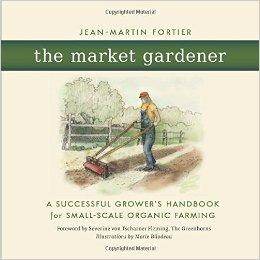Source: amazon.com
Publisher:
NewSocietypublishers
Summary
The author takes the reader into a journey to discover how one can set up a proftable micro-farm on just 1.5 acres.
The Market Gardener is a compendium that shows how in ten years the author and his wife have been able to set up their farm with proven horticultural techniques and innovative growing methods.
This complete guide is packed with practical information on: Setting-up a micro-farm by designing biologically intensive cropping systems, all with negligible capital outlay; farming without a tractor and minimizing fossil fuel inputs through the use of the best hand tools, appropriate machinery and minimum tillage practices; growing mixed vegetables systematically with attention to weed and pest management, crop yields, harvest periods and pricing approaches.
Inspired by the French intensive tradition of maraichage and by iconic American vegetable grower Eliot Coleman, author and farmer Jean-Martin shows by example how to start a market garden and make it both very productive and profitable. Making a living wage farming without big capital outlay or acreages may be closer than you think.
Where to get it?
marketgardener.com
amazon.com
amazon.ca
amazon.co.uk
amazon.au
newsocietypublishers
Related Videos
Related Podcast
podcast 008 beyond organic innovation
Related Threads
small farm forum
making a living
how to make a living on a 1.5 acre farm
market gardeners toolkit
Related Websites
The market gardener webpage
the market gardener toolkit film launch webpage 
 5
5





 2
2



















 3
3




 1
1




 2
2




 1
1

















